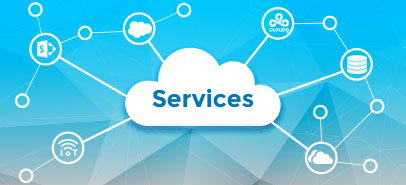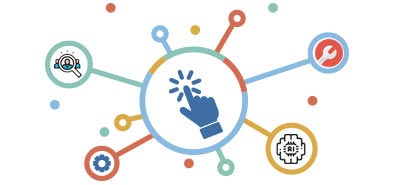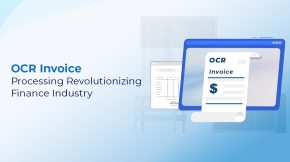How Databricks Can Improve Data Quality – A Practical Guide
A clear walkthrough of Databricks Data Quality capabilities and patterns to resolve modern data quality challenges, one practical step at a time.
Why Data Quality Matters
Every decision, model and report depends on the data behind it. Flawed data quietly erodes trust, leads to costly reversals, and slows progress. Databricks Data Quality practices give teams the confidence to act, because they replace worry with clarity and predictable outcomes.
Organizations pay a real price for poor data: wasted effort, wrong decisions, compliance risk and lost customer trust. The path forward begins with understanding the six core dimensions of quality: Accuracy, Completeness, Consistency, Timeliness, Uniqueness and Validity. Then teams can apply platform patterns that enforce and monitor those dimensions on an ongoing basis.
How Databricks Maintains High Data Quality and Observability
Databricks brings an architectural approach together with features that prevent, detect and resolve data problems. Think of it as a smooth flow: ingest cleanly, validate early, monitor continuously, and recover when needed.
Architecture and Workflow
Use the medallion pattern where Bronze stores raw ingestion, Silver holds cleaned and enriched data, and Gold contains curated data for consumption. At each step apply checks and transforms so the data gains trust as it moves downstream.
Key patterns
- Use schema enforcement and Auto Loader during ingestion to block invalid shapes early.
- Use Delta Live Tables for declarative expectations and safe handling when things go wrong.
- Enable Lakehouse Monitoring for automated profiling, drift detection and metric generation.
- Use Unity Catalog for governance, metadata and lineage so you can find the cause quickly.
Quick facts
Databricks features that work together to protect data
- Delta Lake: ACID, Time Travel and VACUUM
- Delta Live Tables: Expectations with clear handling
- Auto Loader: rescued data and schema hints
- Lakehouse Monitoring: metrics, dashboards and alerts
Understanding Databricks Lakehouse Monitoring and Core Capabilities
Monitoring, observability and automation are central to modern data quality. Lakehouse Monitoring gives built-in metric tables and dashboards for profiling, drift detection and inference analysis. Use these tools to make data problems visible and simple to act on.
Lakehouse Monitoring: what it does
When you enable it in a Unity Catalog workspace, Lakehouse Monitoring auto-creates profiling and drift metrics for Delta tables. It supports time series analysis for timestamped data, snapshot analysis for full-table checks, and inference analysis for model inputs and predictions.
Metric tables are available through Databricks SQL so you can build dashboards and alerts. Use these metrics to spot sudden null spikes or distribution changes and then run your remediation steps.
Delta Lake and Data Guarantees
Delta gives ACID transactions, optimistic concurrency and Time Travel. These features provide consistent snapshots, reliable commits and an easy path to rollback when incorrect data is written.
- RESTORE to a previous version for recovery
- VACUUM to remove older snapshots when privacy or storage needs require it
- Schema enforcement to block incompatible data shapes
Operational Playbook: Constraints, Expectations, Quarantine and Violations
Here are practical rules that tell you how and where to enforce quality so pipelines stay both trustworthy and available.
Constraints
Use table-level constraints when data correctness is essential. NOT NULL or CHECK constraints stop the load if a rule is violated. This approach is best for critical data where integrity matters more than availability.
— add a CHECK constraint
ALTER TABLE table_name ADD CONSTRAINT date_range CHECK (time > ‘2023-01-01’);
DLT Expectations
Delta Live Tables provides declarative expectations. You can choose how to handle violations: keep the bad rows, drop them, or fail the pipeline. DLT stores expectation results so you can monitor quality over time.
@dlt.expect_or_drop(“valid_current_page”, “current_page_id IS NOT NULL AND current_page_title IS NOT NULL”)
Quarantine
When pipeline availability is important, quarantine bad rows into a separate table. This keeps the main pipeline running and saves the problematic rows for later review and repair.
— bad records to quarantine table
INSERT INTO reading_quarantine SELECT * FROM batch_updates WHERE reading <= 0;
Flagging Violations
Tag rows with quality metadata and keep them in the target table. Downstream users can then decide whether to include or ignore tagged rows based on their needs.
from pyspark.sql import functions as F
df.select(“*”, F.when(F.col(“reading”) <= 0, “Negative Reading”).otherwise(“Good”).alias(“reading_check”))
Deduplication and Uniqueness
Use MERGE for upserts, distinct() or dropDuplicates() for simple duplicate removal, and ranking windows for complex logic such as keeping the latest record per key.
# ranking window example
from pyspark.sql.window import Window
window = Window.partitionBy(“user_id”).orderBy(F.col(“timestamp”).desc())
Automation & Tools: DQX, DataBuck and Best Practices
Automation shortens the path from discovery to fix. Good tools profile data, create checks and help apply them consistently across many tables.
Databricks Labs DQX
DQX can profile a dataset, create candidate rules, validate them and then split data into silver for valid rows and quarantine for invalid rows. You can use DQX for batch DataFrames. With careful design, it can also support streaming workloads.
from databricks.labs.dqx.profiler.profiler import DQProfiler
profiler = DQProfiler(ws)
summary_stats, profiles = profiler.profile(input_df)
FirstEigen DataBuck and Other Solutions
Third-party tools such as DataBuck use machine learning to expand check coverage and to create trust scores. They work well with Databricks because they automate rule maintenance and present results to non-technical users.
Monitoring, Alerts and Remediation
Store metrics in Delta tables, display them in Databricks SQL dashboards and set alerts for key thresholds like drift or null spikes. When alerts trigger, use webhooks to start remediation jobs or retrain models automatically.
— example: query drift metric table
SELECT metric_name, window_start, value FROM monitor_drift WHERE table_name=’sales’ AND metric_name=’percent_null_end_date’;
Appendix — Practical Recipes, Governance and Image Rephrases
Here are hands-on recipes, governance notes and rephrased image captions that support the guidance in this document.
Ingestion and Validation Recipe
— COPY INTO with VALIDATE to preview and validate row samples
COPY INTO my_table FROM ‘s3://bucket/path’ FILEFORMAT = PARQUET VALIDATE 100 ROWS;
DLT Expectation Examples
# Retain invalid records (DLT)
@dlt.expect(“valid_timestamp”, “timestamp > ‘2012-01-01′”)
# Drop invalid rows
@dlt.expect_or_drop(“valid_current_page”, “current_page_id IS NOT NULL AND current_page_title IS NOT NULL”)
# Fail on invalid rows
@dlt.expect_or_fail(“valid_count”, “count > 0”)
Governance and Privacy Controls
Use Unity Catalog to label sensitive tables and columns by setting TBLPROPERTIES and COMMENTS. Establish a clear VACUUM policy so you balance retention with privacy needs. Time Travel helps with audit and recovery, but require approvals before you remove history.
How Beyond Key Delivers
Beyond Key combines deep Databricks knowledge with practical automation and a human-centered delivery method. We start with discovery, then apply priority checks, and automate enforcement with DLT and DQX when that makes sense. We also provide runbooks, alert integrations and a remediation pipeline. The result is less friction, faster trust and clearer business value.
Conclusion
Databricks Data Quality is not just a feature. It is a set of coordinated patterns, platform capabilities and tools that make data reliable and useful. Follow the medallion architecture, use Delta guarantees, apply DLT expectations, enable Lakehouse Monitoring, and bring in automation with DQX or DataBuck when that helps. These moves turn data quality challenges into routine, manageable work.
Start with one clear check, automate the repetitive parts, monitor continuously and create simple remediation steps that keep pipelines running while protecting the truth of your data. When quality is treated as a product, your data becomes a real asset instead of a recurring problem.
FAQs
1. What is Databricks Data Quality and why should I care?
Databricks Data Quality means using Databricks tools and patterns to enforce, monitor and fix data issues. It helps you avoid wrong reports, compliance failures and bad model results.
2. How does Lakehouse Monitoring help detect data issues?
Lakehouse Monitoring profiles tables, computes drift and inference metrics, and writes them into metric tables. Dashboards and alerts then make it easy to spot problems early.
3. When should I choose constraints, expectations or quarantine?
Choose constraints when correctness is critical. Use DLT expectations for declarative checks with clear actions. Pick quarantine when you need the pipeline to keep running while you fix bad rows.
4. Can I automate rule generation at scale?
Yes. DQX and tools like DataBuck can profile data and propose checks. After you validate them, apply those checks in DLT or an enforcement engine across many tables.
5. How do I handle schema changes without breaking pipelines?
Use Schema Evolution for safe, additive changes. For breaking changes, update schemas explicitly, test carefully and restart streams if needed.
6. Is real-time data quality possible on Databricks?
Yes. Use Structured Streaming or Delta Live Tables with expectations, plus Lakehouse Monitoring time-series analysis, to run checks and quarantine or flag bad records in near real time.












